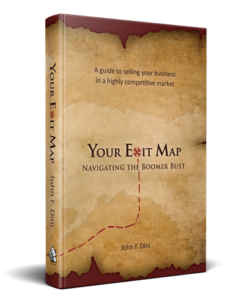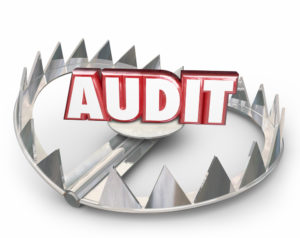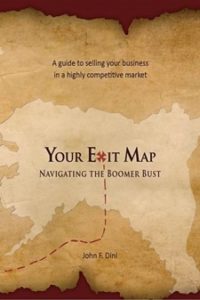Lifestyle vs. Legacy
Why would I refer to the results of an internal transfer as “lifestyle vs. lucre?” Lucre is a pejorative term. While it is technically just a synonym for money, most dictionaries draw the parallel to its use in “filthy lucre;” money that is ill-gotten or otherwise dishonorably obtained.
I was honored to present at the Exit Planning Summit this past weekend. One of the things I discussed was the need to help business owners determine whether their personal vision for their company’s future was based on lifestyle or legacy. That’s how I normally term it, and there is no negative connotation attached to either term.
That “lifestyle vs. legacy” decision, however, usually designates the difference between selling to a third party for full market value (lifestyle) and selling to employees in order to preserve the culture and quality of the organization (legacy.)
Legacy vs. Lucre
“Legacy vs. lucre” is my term for the differing motivations in an internal transfer, and it is fully intended to be pejorative.
For a business owner, the greatest appeal of an internal transfer is control. He or she gets to pick the new owners, their timeframe for taking over the company, and how much they will have to pay.
Sometimes, that avenue to exit is chosen because the owner knows he or she can’t get a satisfactory price in the open market. The company just isn’t worth what he wants for it.
 So selling to employees becomes a vehicle to get more than fair market value. Of course, no third-party lender will touch a deal for more than the business is worth, so almost by definition such transactions have to be seller-financed.
So selling to employees becomes a vehicle to get more than fair market value. Of course, no third-party lender will touch a deal for more than the business is worth, so almost by definition such transactions have to be seller-financed.
That is one of the reasons we hear horror stories about selling a business to employees for a note, and having to take it back when they default. Their failure may have been due to a lack of training to run the business, or an unsupportable price. Either way, they were set up for failure by an owner who was more interested in getting a check than in what happened down the road.
Legacy Requires Win-Win
Selling to a third party is an arms-length transaction. Both parties have their own agenda and advisor team. The buyer is perfectly cognizant of Caveat Emptor. The seller wishes to maximize the proceeds, the buyer to minimize his cost. The result is usually something in between.
When selling to employees, the playing field isn’t even. The employees have followed the seller’s direction for a long time. They are accustomed to doing what he says. It’s when the owner takes unfair advantage of his status that legacy turns into lucre.
“Read” my new book in 12 minutes!
 Your Exit Map, Navigating the Boomer Bust is now available on Amazon, Barnes & Noble and wherever books are sold. It was ranked the #1 new release in its category on Amazon, and is supplemented by free tools and educational materials at www.YourExitMap.com.
Your Exit Map, Navigating the Boomer Bust is now available on Amazon, Barnes & Noble and wherever books are sold. It was ranked the #1 new release in its category on Amazon, and is supplemented by free tools and educational materials at www.YourExitMap.com.
Now, we have a really cool 12 minute animated video from our friends at readitfor.me that summarizes the book, and helps you understand why it is so different from “how to” exit planning tomes. Take some time to check it out here. Thanks!
 It will absolutely be an issue if your growth rate falters during due diligence. It’s hard to go through the machinations of a transaction and pay attention to driving the company at the same time. Just be aware that taking your foot off the gas will be noticed, and accounted for.
It will absolutely be an issue if your growth rate falters during due diligence. It’s hard to go through the machinations of a transaction and pay attention to driving the company at the same time. Just be aware that taking your foot off the gas will be noticed, and accounted for. The first is accrued vacation or PTO. It is customary to keep records of this liability off the balance sheet, but professional buyers don’t see it that way. The benefit was earned while producing for the seller. They buyer has no reason to pay it out for work that wasn’t done for him.
The first is accrued vacation or PTO. It is customary to keep records of this liability off the balance sheet, but professional buyers don’t see it that way. The benefit was earned while producing for the seller. They buyer has no reason to pay it out for work that wasn’t done for him. Competitors will tell customers, insinuating that your company will no longer be a dependable supplier. Employees might begin looking for greater security in other jobs. Vendors may seek another distribution channel. Your bank could start tightening your credit.
Competitors will tell customers, insinuating that your company will no longer be a dependable supplier. Employees might begin looking for greater security in other jobs. Vendors may seek another distribution channel. Your bank could start tightening your credit.
 Exit planning is the process of developing a business owner’s strategy for what may be the biggest financial transaction of his or her life…the transfer of the business. That strategy may be a succession to the next generation of family. It could be a sale to employees. It may be a sale to another entrepreneur, or acquisition by a larger company. In some cases, it could require an orderly dissolution.
Exit planning is the process of developing a business owner’s strategy for what may be the biggest financial transaction of his or her life…the transfer of the business. That strategy may be a succession to the next generation of family. It could be a sale to employees. It may be a sale to another entrepreneur, or acquisition by a larger company. In some cases, it could require an orderly dissolution.